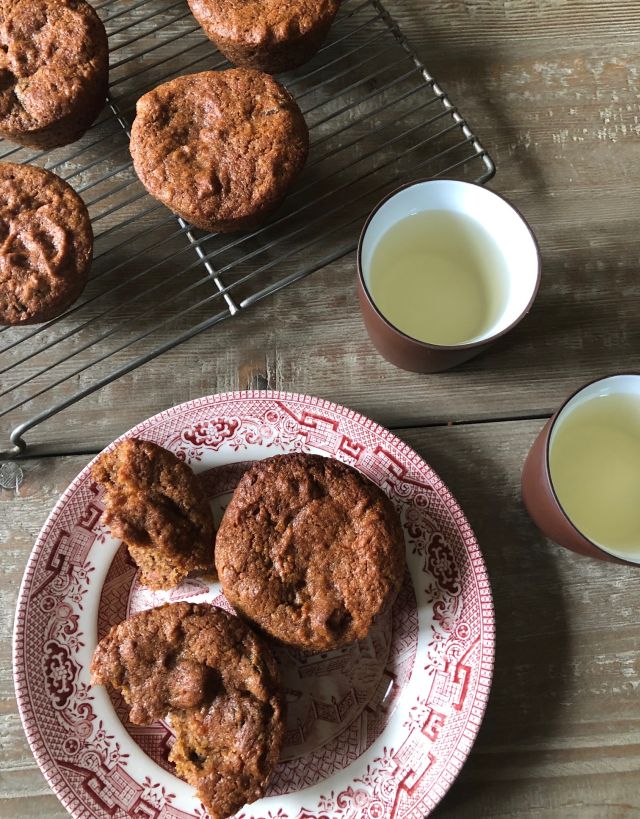
My parents adore bargains, especially the ones at their local Salvation Army on Wednesdays, when seniors receive a 25 percent discount. On October 12, 2016, they scored a charming set of English Royal Wessex Red Willow dishes for about $22 (discounted from the original $29.50). They bought it with the intention of gifting it to me. Problem is, they packed it so well and stored it in their attic that they forgot about it until Christmas of 2017.
Mom dragged it from the attic and handed the box over to me before we left their house. I didn’t know about the set of dishes so her belated gift was a new gift to me. They’d barely been used and included two serving bowls (large enough for extra-large pho) and platters. I love certain vintage dishware and utensils and set these in the cupboard to use often. The color and pattern made me want to serve dainty things on them.
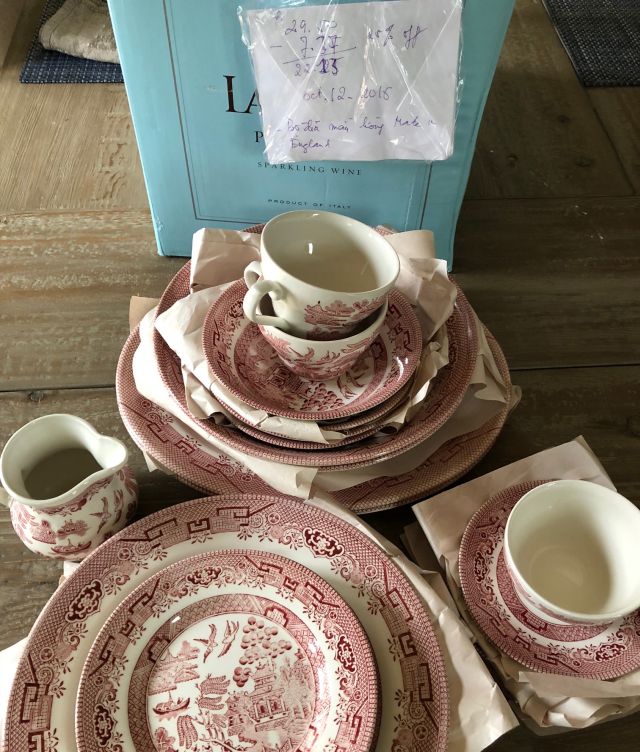
Before Christmas, I also received another installment of persimmons from Dan, our quasi-nefarious neighbor. The mini Fuyu and Hachiyas were delicious and I ended up re-gifting most of the stash to Bryant Ng of Cassia in Santa Monica. I kept a few for myself. The fruit ripened to a gelatinous sweetness and I didn’t want to discard them.
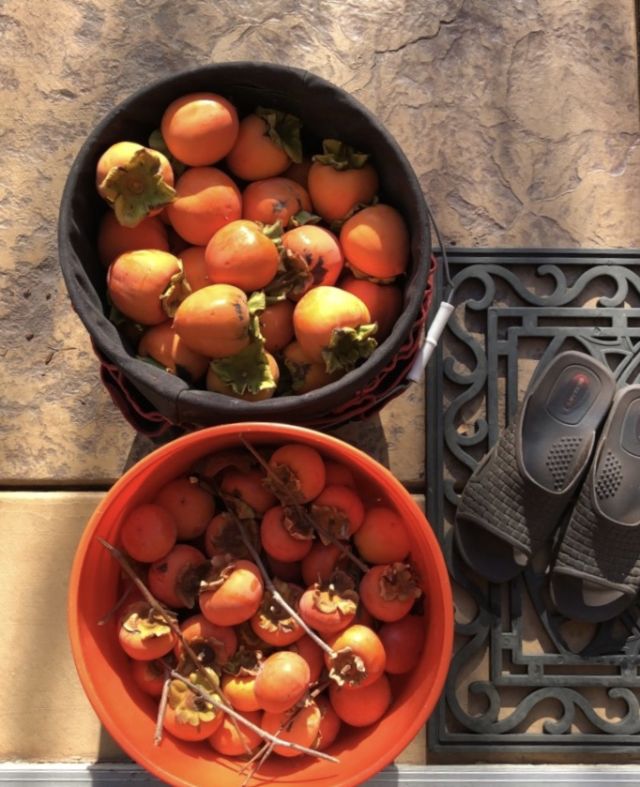
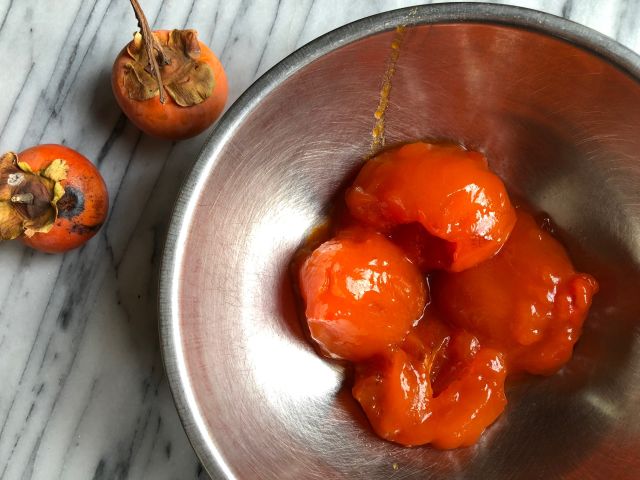
To put them to use, I picked a recipe from Alice Medrich’s amazing book, Gluten-Free Flavor Flours. It was recently issued in paperback so it’s a great deal!
Alice’s recipe for a spiced pumpkin loaf fascinated me because she’s one of the few bakers who recognize the uses and differences between Thai and American rice flours.
Thai rice flour is fine, soft, and light where as American rice flours are grittier and heavier. That’s because Thai rice flour is made by soaking raw rice, grinding it, then drying it. The America flour is ground from the raw, dry grains.
Alice has equivalents in her recipes that use rice flour so I wanted to experience her recipe using my Erawan (a.k.a. “3 Head Elephant) brand of regular white rice flour. (I needed to use up my 2017 stash.) I got the buckwheat flour – the flour used for Japanese soba noodles and Russian blini pancakes, from the bulk section of our healthy food market. The buckwheat lends an earthy depth.
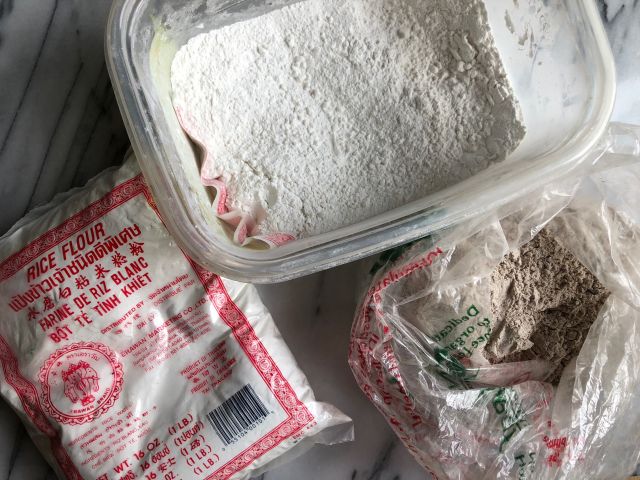
The muffins came together handily with a hand-held mixer, though you can use a stand mixer if you want. I have both but for smallish jobs, I like the OXO mixer, which has a light to allow you to get a close look at how the ingredients are being transformed. The chord easily wraps around the machine for efficient storage. It costs more than other hand-mixers but I’ve been happy with it. Another good mixer is the Kitchen Aide model, which lacks the downward light but the speed power is lit so you know how fast the machine is going. On the OXO, you can listen to speed to gauge the unit’s performance.
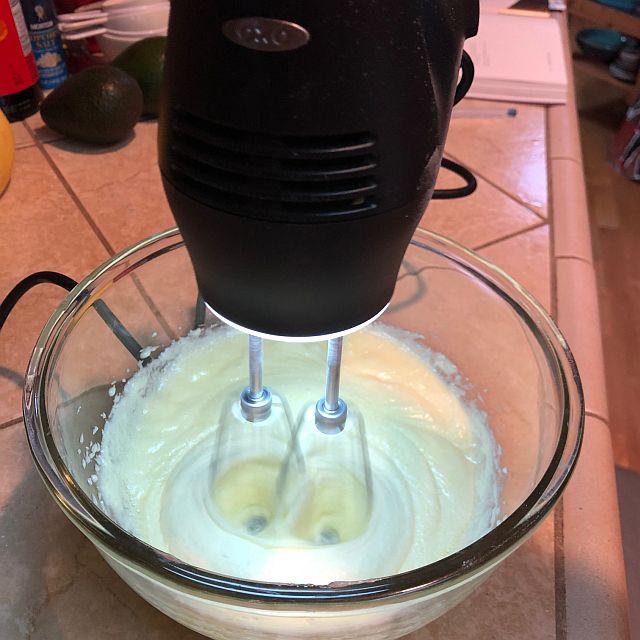
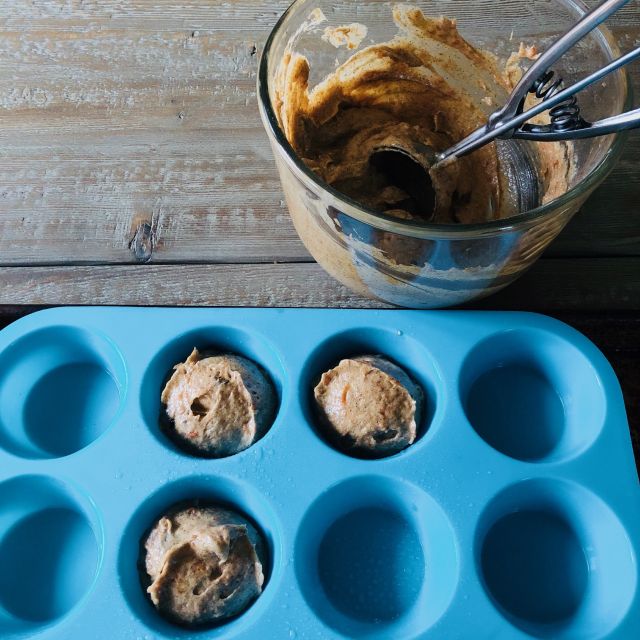
In adapting Alice’s original recipe, I swapped the persimmon for the pumpkin puree and used candied ginger and some raisins. I also tweaked the spice blend to include ground ginger and mace.
The first time I made the muffins, the overripe Hachiya persimmons were incredibly sweet. The muffins were more cupcake like. My neighbors liked them but my husband and I wanted a little less sugar.
The second try was with Fuyu persimmons which are not as sweet or liquidy as the Hachiya variety. I removed 1 tablespoon of sugar and increased the buckwheat a little. The result was less decadent and more wholesome tasting.
These muffins keep well in the fridge or freezer. We’ve been enjoying them slightly warmed with our afternoon ginseng tea (I use tea bags by Prince of Peace, another discovery over the holidays).
Choose where you want to be with this recipe. It’s amazing that the muffins are gluten free. Whip up a half batch, if you like.
Spiced Persimmon and Ginger Muffin Recipe
Yield 12 to 14 muffins
Use a small food processor, regular blender or stick blender to puree the persimmon.
Ingredients
- 1 stick (115 grams) unsalted butter
- ¾ cup (120 grams) white rice flour, or 1 ¼ cups (120 grams) Thai white rice flour
- ⅓ cup (40 grams) buckwheat flour (add 2 teaspoons, about 7 grams, when using less sugar below)
- ½ teaspoon baking soda
- 1 teaspoon baking powder
- ½ teaspoon ground cinnamon
- ½ teaspoon ground ginger
- ½ teaspoon ground nutmeg, or ¼ teaspoon ground nutmeg plus ¼ teaspoon ground mace
- ¼ teaspoon fine sea salt
- ½ cup (70 grams) chopped candied ginger, raisins and/or currants
- ¾ cup persimmon or pumpkin puree
- 1 cup (200 grams) sugar (uses 1 tablespoon less if the puree is super sweet)
- 2 large eggs
Instructions
- Heat the oven to 350F with a rack in the lower third position. Spray (or brush) the cups of a muffin tin with oil, or use paper muffin cup liner.
- Put the butter in a medium-large microwave safe bowl and melt on high power for about 45 seconds. (Or use a saucepan and transfer to a bowl.) Let cool until lukewarm or room temperature.
- Meanwhile, measure or prep the ingredients from the rice flour down to the ginger. As you work, put the ingredients in one bowl since they’ll all added to the batter at the same time. Use your fingers to gently combine and coat the ginger (or dried fruit). Set aside.
- Once the butter has cooled, add the sugar and eggs to the bowl. Use a hand-held mixer or stand mixer outfitted with the paddle attachment to beat the mixture until it is pale yellow with a thick consistency, somewhat like soft frosting. With the hand-held mixer, select medium-high speed and beat for 3 to 4 minutes. When using a stand mixer, beat at medium speed for about 2 minutes. When done, turn off the machine.
- Add the flour mixture and the fruit puree. Regardless of machine, beat on low speed until combined and the smooth. There will be lumps from the ginger (or fruit) but the batter itself is overall smooth.
- Use an ice cream scoop, measuring cup, or spoon to divide the batter among the muffin cups. Fill them to about ¾ full. Bake for 20 to 25 minutes, until slightly puffed and a skewer inserted comes out clean.
- Cool on a rack for 15 minutes before unmolding or removing the muffins. The muffins can be stored for several days in an airtight container. Or, freeze on a parchment paper-lined baking sheet until hard then transfer to an airtight container to freeze for about 1 month. These are good at room temperature or warmed.
Notes
Adapted from Alice Medrich’s amazing book, Gluten-Free Flavor Flours (Artisan, 2017)
Courses Breakfast, dessert
Cuisine American













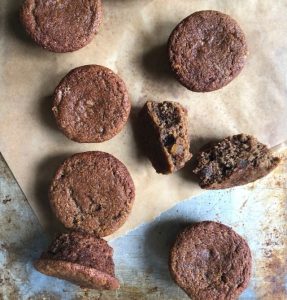




Dorothy Black says
I am a big fan of your site! This recipe is fascinating and I am putting this away for next year! Notice that you show Fuyus as well as the heart shaped persimmons, glad that both can be used. I am partial to the Fuyu variety. I might swap almonds for the raisins. Do you think that almond flour could be substituted for the buckwheat? Just a thought.
Andrea Nguyen says
Hi Dorothy! I don't see why almond flour couldn't be used instead of buckwheat. The flavor and color would be different. Back off the spices by about 25%.